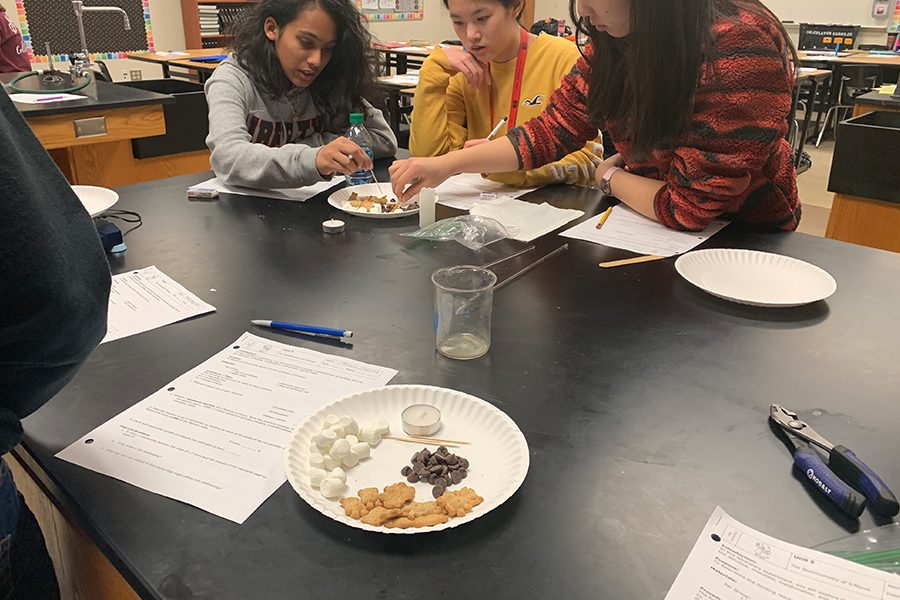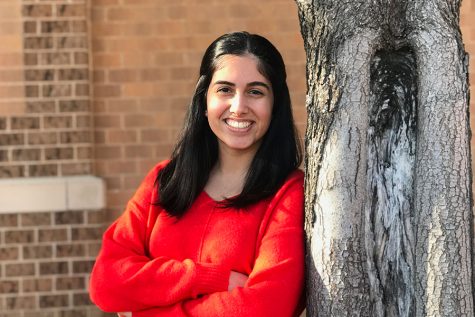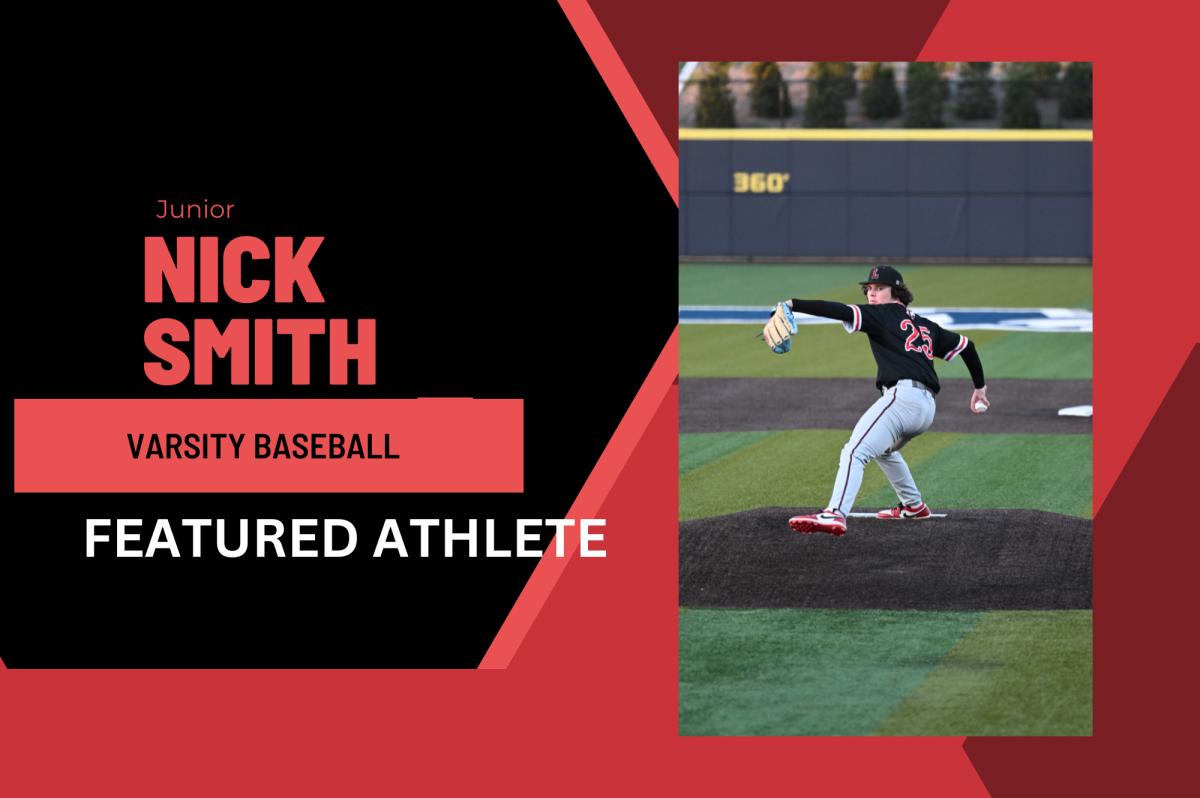Sophomores use s’mores in chemistry
Chemistry students are making s’mores in class on Thursday and Friday as part of their new unit on stoichiometry. The activity allows students to get a visual representation of the chemistry they are learning and helps students understand the concepts of the class.
March 1, 2019
Chemistry classes on campus are taking a sticky twist on Thursday and Friday as students incorporate making s’mores into the start of their new unit, ideally helping students better understand the material of the class.
“We’re starting stoichiometry which is definitely a topic that students are afraid of and it is just kind of known to be one of the hardest topics,” chemistry teacher Joann Jang said. “Basically we’re learning about if we have a reaction, what’s going to limit our reaction so that’s how we are learning about about limiting reactant and by using s’mores, we’re able to figure out how many s’mores we make and what limits how much we can make.”
The activity helps students visualize the content, which allows students to envision the math behind the chemistry.
“I think it allows us to kind of get a visual idea of what we’re doing and how we’re doing the math and that will kind of help us,” sophomore Sabrina Wood said. “My favorite part of this activity is probably eating the s’mores.”
By incorporating s’mores, the students are able to enrich their understanding of the chemistry they are learning.
“It’s kind of interesting,” sophomore Olivia Allphin said. “I think it helps you to realize that each part of the s’more is different just like each part of a chemical compound is a different kind of element; that helps you to realize like two graham crackers plus three chocolate chips is the same as three magnesium and two carbon or something like that.”
Beyond being a fun activity to learn about chemistry, the s’mores allow students to connect the classroom to the real world and give a purpose to the material they are studying.
“Students like food and they like to relate things that clash into real world,” Jang said. “I have a lot of students always asked me like, ‘What’s the point? Why do you this? How can we even use this outside the class?’ and sometimes I have to say, ‘We don’t’ but you know, this time we can say ‘Oh yeah, we can use this for baking or you know, making food for recipes.’ So I think doing this activity will show them that you can apply this to like when you’re cooking or anything like that.”







